When it comes to tea, many of us are guilty of a few no-nos—we might use scorching water or let tea leaves languish in the water for too long. These habits can easily kill the taste of good tea. Tea drinking, as we’ve learned, can be full of pleasure, from its ability to put us in a bright, alert state to its pretty visuals, but at the most basic level it should taste good.
At Bellocq, a tea atelier based in Brooklyn founded by Heidi Johannsen Stewart and Michael Shannon, we got the final word on how to source, steep, strain, and serve a delicious and uplifting cup of tea.
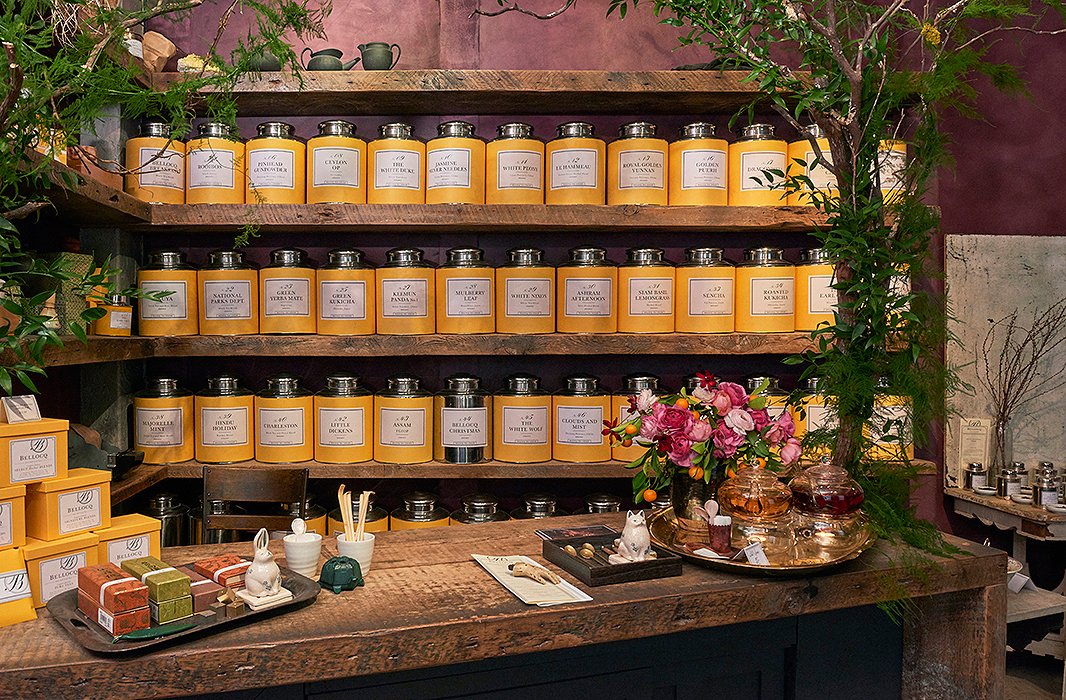
Bellocq’s canisters keep their tea leaves fresh and fragrant. Before you get to making your cup of tea, take a moment to inhale the subtle aroma of the leaves—the scent alone might make you fall in love.
#1: Get to Know These Tea Terms
Full leaf: This may be the most important. “There are different grades of tea leaf—the dust, the fannings, the broken bits,” Michael explains. “Blended teas in tea bags are usually a mix of low-quality grades and will taste watery. Full-leaf tea has been carefully harvested and processed, which preserves its flavor.” These teas will have a full mouth feel (yes, we’re talking about tea here, not wine).
Single origin: A single-origin tea comes from one estate—a single tea farm—rather than being a sort of mystery-meat mix of leaves. This gives you a pure feeling of a place, whether it’s the mist-covered mountains of China’s Zhejiang Province or the Nepalese Himalayas at peak wildflower season.
Organic: “Tea is agriculture—it has grown on a plant, been affected by the weather, the environment, the soil, the cultivator,” Michael says. You want your tea to come from a good farm, with its full flavors intact. A chemical-free tea just tastes better, and its cultivation treads more gently on the earth.
Michael says to pay attention to a tea’s aftereffects: “It really comes down to how you feel after drinking the tea. A bad tea will sink like a stone, and a good tea will lift you up.” The takeaway is, of course, that you get what you pay for: Teas with a rich flavor profile cost more. Yet, unlike most tea bags, high-grade leaves can be brewed several times (as long as they stay warm).
A Quick Word: Storing Tea
Humidity, air, and light deplete tea of its powers. Once you get tea leaves or tea bags home, transfer them into airtight containers or tins in a dark cabinet.
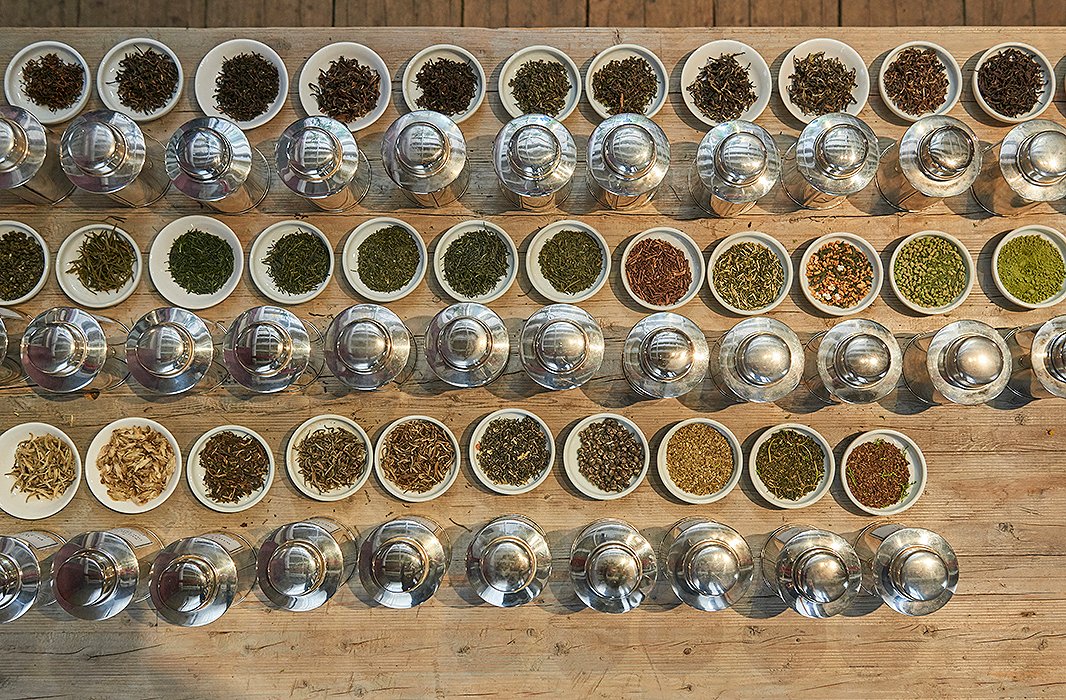
Bellocq’s pure tea offerings range from Chinese pu-erhs to Japanese senchas to rare oolongs; the uniting quality is that every one is full leaf and single-estate grown. The majority are organic too.
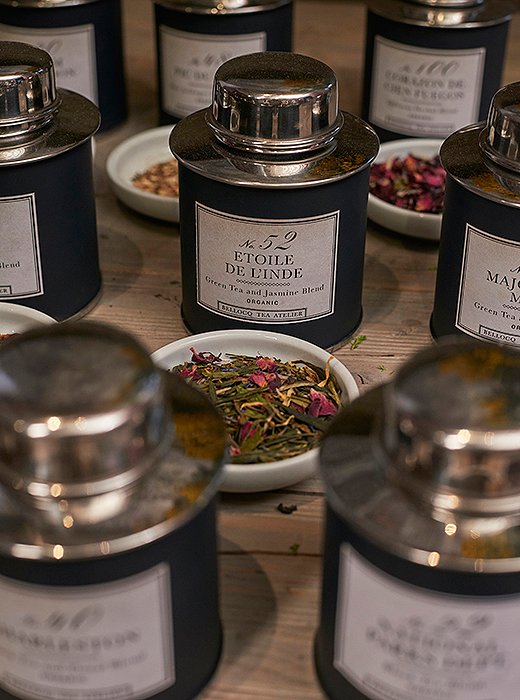
Bellocq’s blended—or flavored—teas have the added lure of looking beautiful. To make a blended tea, flowers, spices, fruits, or herbs are rolled in after leaves are processed (Earl Grey—a black tea with essential oil of bergamot—is the classic blended tea).
#2: Find Your Favorite
There are endless varieties of teas out there. Novelty is nice, but Michael says it can be wonderful to find one you love and return to it “like an old friend or a favorite restaurant.” Some suggestions on where to begin, depending on your mood:
Low-acid black tea…
For zippy, clear-headed energy
Black teas are fully oxidized teas, and the most popular versions are breakfast teas. There are Irish, Indian, and English breakfast teas, the last being high in acid.
Pu-erh…
For a dreamier lift
Pu-erhs go through a microbial fermentation process after the leaves are dried, which makes them one of the most dynamic teas—and perhaps most healthful. Alice Waters recently said she lowered her cholesterol dramatically by merely switching her daily breakfast from cappuccino and eggs to a pu-erh tea and oatmeal. Like champagne, which can only rightfully be called that if it comes from the Champagne region of France, a true pu-erh must come from one of the villages in southwest China’s Yunnan Province.
Oolong…
For a romantic lift with a long finish
These famed Chinese teas are three-quarters oxidized and have a touch of fermentation; they fall somewhere between a green and a black tea. Endlessly complex, they have a lovely taste, which depends “on which mountain range the leaves grow on and the person growing them,” says Heidi. “There are lighter, greener ones with maybe some orchid, maybe a little milky, a taste of spun sugar, and then there are the roasted oolongs that I’d call toasty, warm, syrupy, with flavors of stone fruit and molasses.”
Japanese green tea…
For calm, cool energy
The taste of Japanese greens is “fresher, grassier, more herbaceous,” Heidi says. She’s particularly devoted to Japanese senchas, which are “light, quenching, floral, with a light and high energy—if we’re describing what the Chinese would call the tea’s chi.” That chi has everything to do with the soil and environment in which the tea is grown.
Matcha…
For focus
A powder made of high-grade green-tea leaves, matcha packs a wallop: Compared with green tea, the caffeine content is high, and the antioxidant content is sky-high. “Because you’re consuming the entire leaf, rather than just infusing the leaf into water, you’re getting all of its effects and much higher concentrations of chlorophylls,” Heidi says. Buddhist monks have long used it to boost their meditation, and many students have gotten into it for its focusing powers.

Bellocq also stocks classics, such as English, Irish, and Indian breakfast teas; among the specialty teas is there very own Japanese matcha green tea powder.
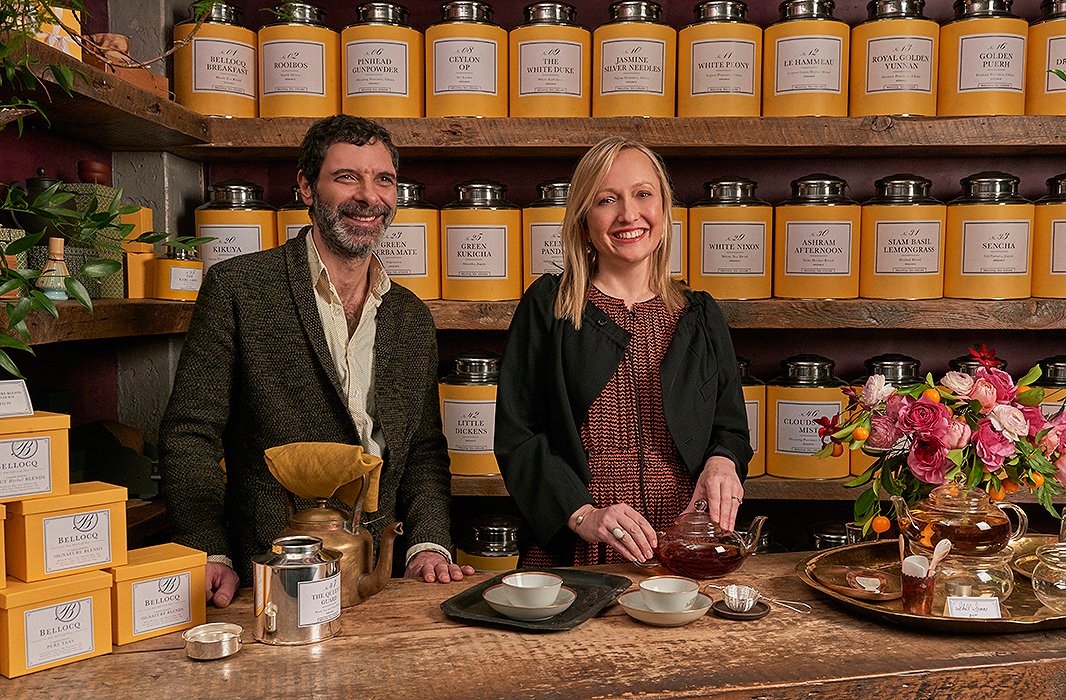
Michael and Heidi say the steeping process quickly becomes second nature and takes just a strainer, a tea kettle, and a few minutes of focus.
#3: Steep Your Tea Right (in 4 Simple Steps)
It bears repeating: Oversteeping tea or using water that was boiling just a second before blasts out the tea’s subtle flavors and embitters its taste. Steeping tea correctly takes a smidgen of focus, and maybe a timer, but the result is so worth it.
The ideal way to begin is with fresh leaves that haven’t been sitting in a cabinet for more than a few months. “Tea doesn’t go bad; it goes flat,” says Michael. Similarly, start with good water: ”We can’t stress water quality enough,” Heidi says, “since tea really is all water.” Filter your water or go to the always-reliable Poland Spring.
Once you have fresh leaves and good water, here’s how to handle them:
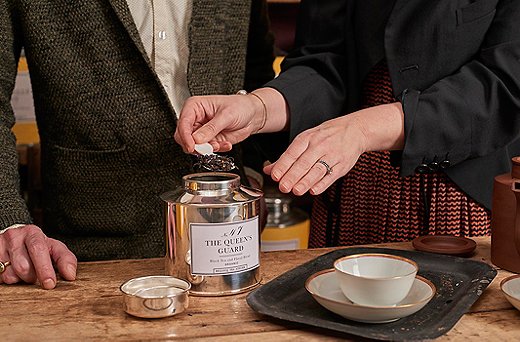
Step 1: For every cup, add one teaspoon of leaves into a strainer. When making a single cup for yourself, place the strainer directly over your cup. If you’re making a big pot of tea for yourself, put the strainer inside the teapot; if you’re making tea for a few people, you can put the tea leaves directly into the teapot (because you’ll be serving all the tea at once, the leaves won’t oversteep in there).
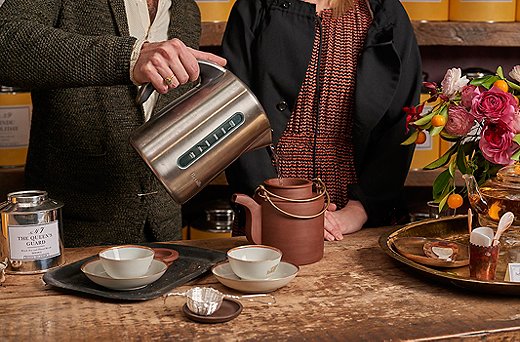
Step 2: Boil cold water in an electric kettle (my go-to) or a tea kettle. Let it cool for 30 seconds to a minute before pouring it over the leaves. This pause is key to the final taste.
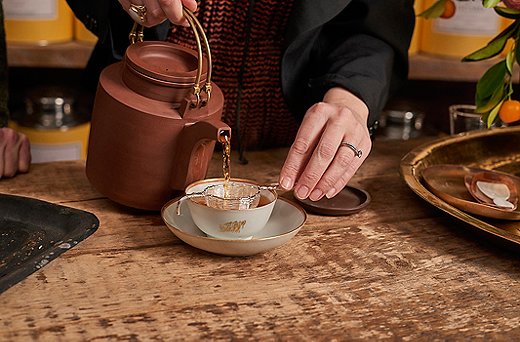
Step 3: Unless the tea comes with different instructions, steep for 3-5 minutes. Set a timer on your phone or do whatever you can to prevent oversteeping. If pouring tea out of a teapot for a crowd, put the strainer over each cup so that the leaves don’t escape.
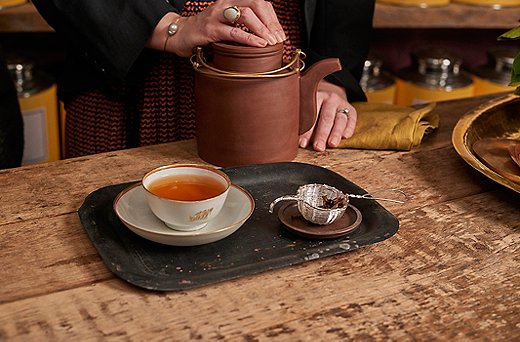
Step 4: Add whatever you like. There are no rules about what to put in tea—”In Kashmir, you’d have green tea with milk in it,” says Michael—but he suggests tasting it before you add milk or honey.
A Quick Word: Cold-Brewing Iced Tea
Heidi and Michael love to cold-brew their iced tea: “It’s a gentle process and brings out the tea’s subtler flavors,” Michael says. Using a ratio of a half-cup of tea leaves per gallon of water, they steep the leaves at room temperature—on the kitchen counter in a big pitcher—for four hours, five at the most. Most iced teas lose their structure after a day or so of sitting in the fridge, so enjoy them in the moment.
One exception: For iced teas with hard spices such as chai tea, brew the tea with hot water first and then cool it in the fridge. You can speed the cooling process by brewing it stronger than you normally would, pouring the steeped tea over ice and letting it cool a bit, and then putting it in the fridge. After an hour, the iced tea will be ready.
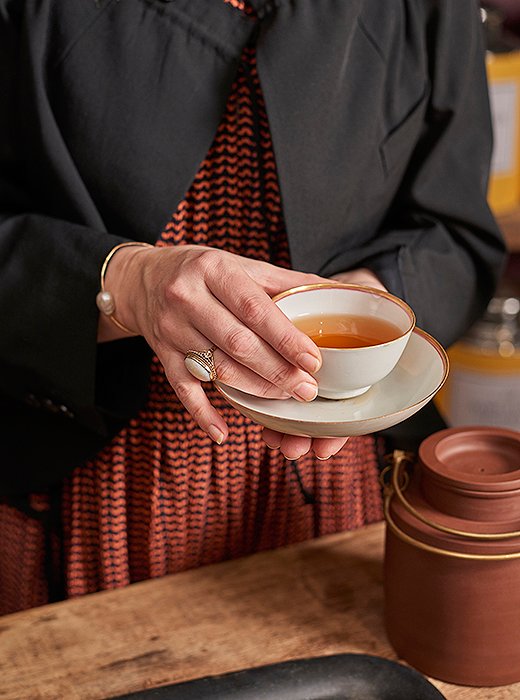
A well-brewed tea, with its fragrance and clear color, quickly becomes something you crave. Serving your perfect cup of tea in a delicate and beautiful cup only adds to any tea-drinking ritual.

It really comes down to how you feel after drinking the tea. A bad tea will sink like a stone, and a good tea will lift you up.
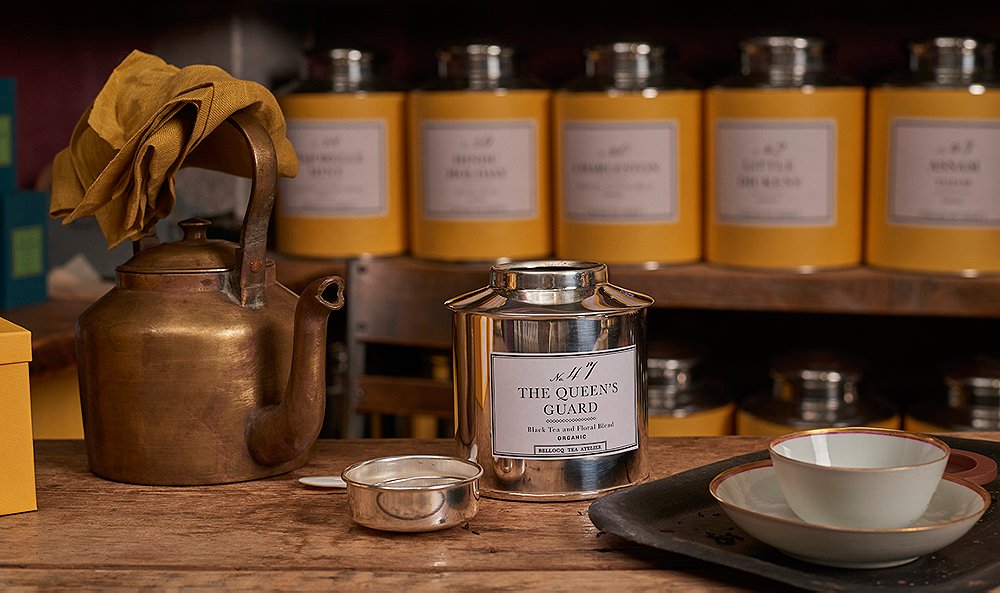
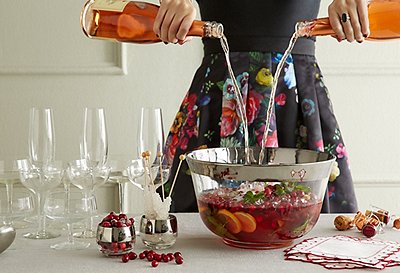
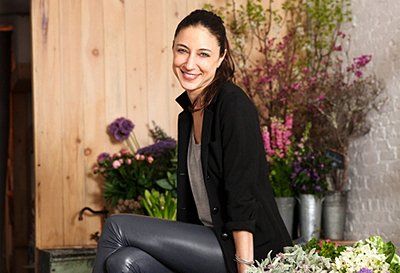
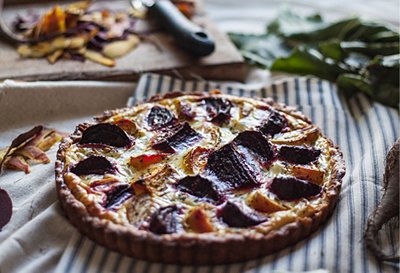
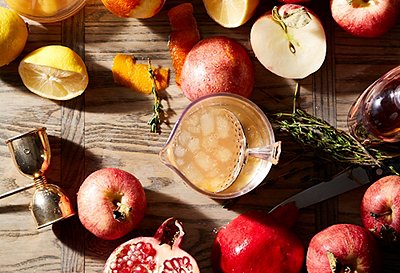
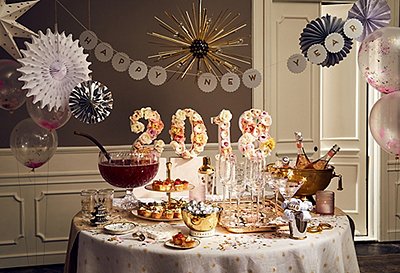
Join the Discussion